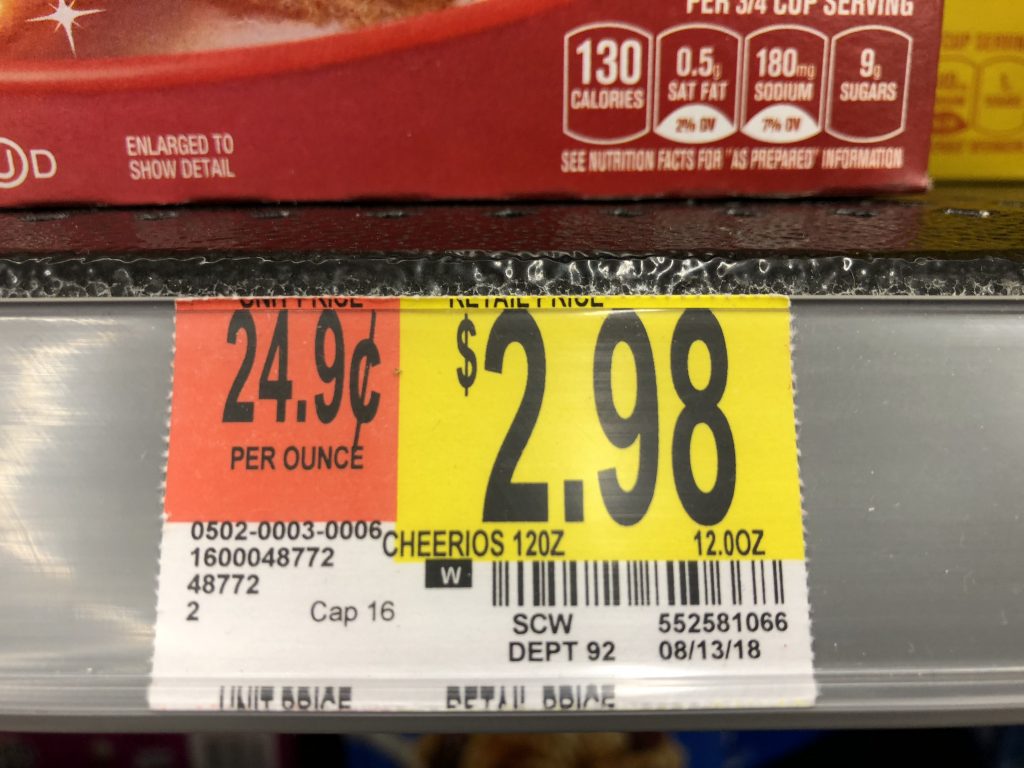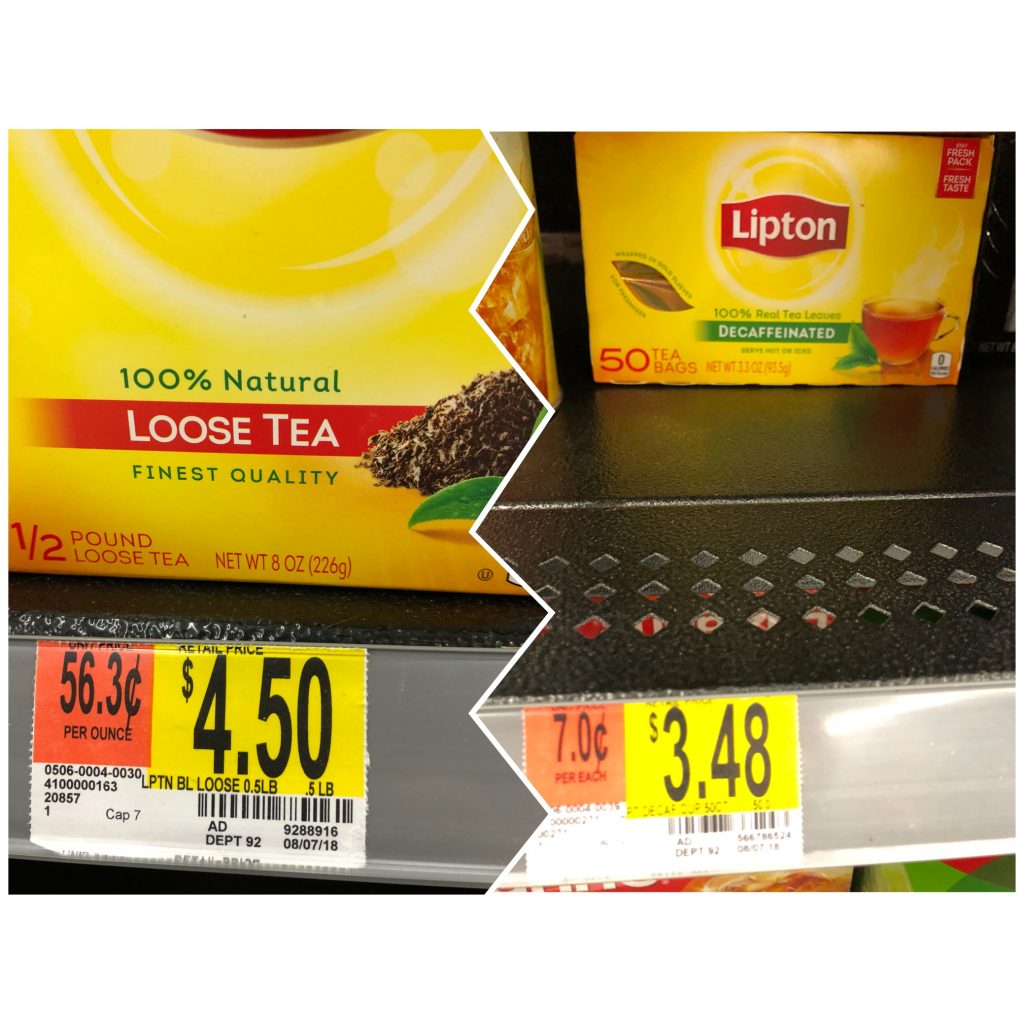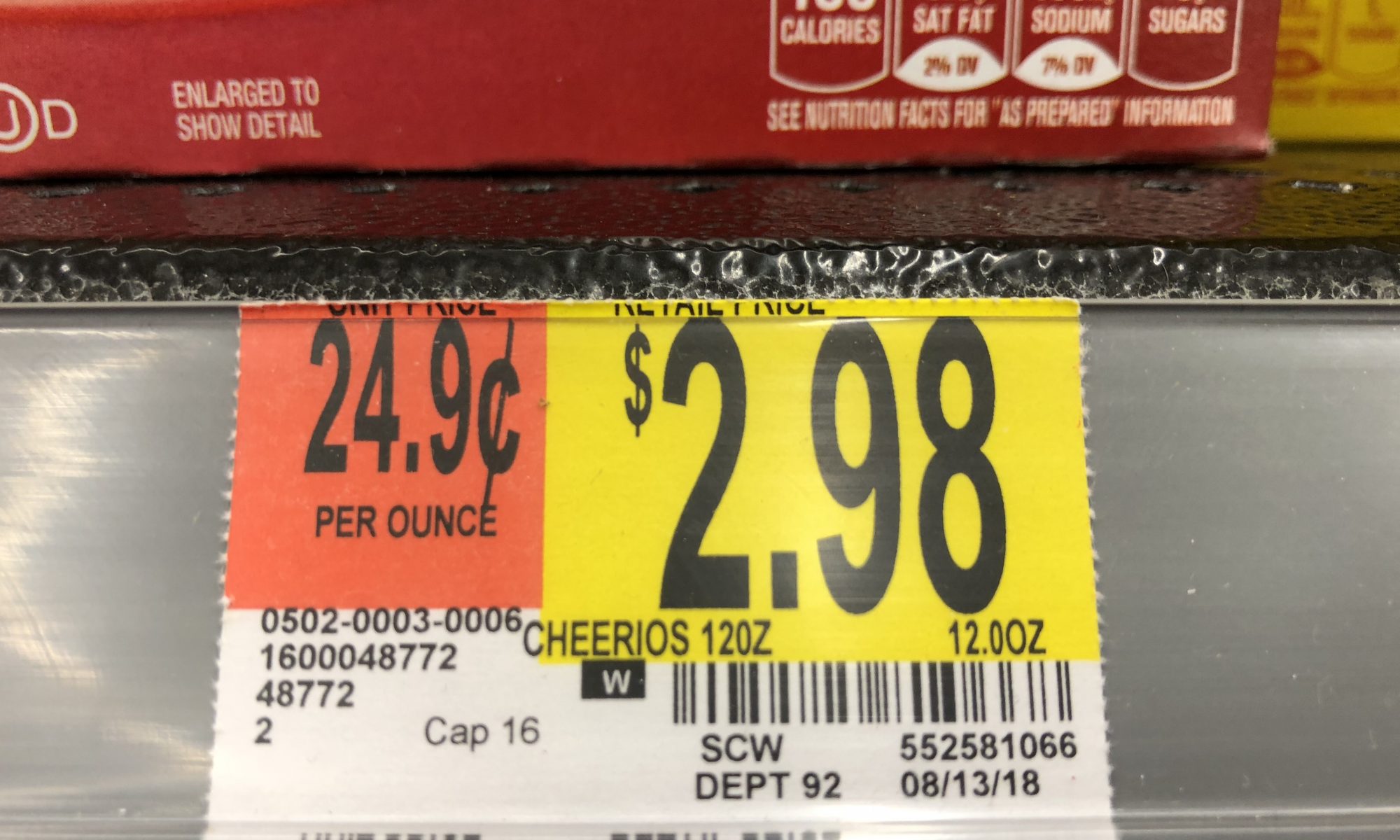Click here for Part 1 in this series. This post contains affiliate links. If you make a qualifying purchase after clicking a link, we may receive a percentage of the purchase price.
My mother always took us grocery shopping when we were small. By the time I was 8, she would say she either needed to bring a calculator or me. I would keep a running tally of everything in the basket in my head and I would calculate unit pricing, also in my head, whenever she needed, without losing track of the running tally. I like math 🙂
An Overview of Unit Pricing
Unit pricing is the single most important piece of information you need in order to truly comparison shop. Is the 40 oz jar of peanut butter a better deal than the 16 oz jar of peanut butter? The only way to know is to know the unit pricing.
To find the unit pricing, you divide the price of the product by the number of units in the product in order to find the price of a single unit. In the peanut butter example, let’s say the 40 oz jar of peanut butter is $7.50 and the 16 oz jar of peanut butter is $3.00. Which one is a better deal? $7.50 / 40 = $0.19 / oz. $2.75 / 16 = $0.17 / oz. The smaller jar of peanut butter is the better deal. (I made up prices; the real price on Amazon is much better than this, if you are an Amazon Prime member. The ad below is an affiliate link.)
Two things make unit pricing easier today than it was when I was a child. First, 18 states plus the US Virgin Islands, Puerto Rico, and the District of Columbia now have labeling laws that require the price posted on the shelf to include unit pricing.

Major online realtors, including Walmart and Amazon, have unit pricing listed on the food items for sale on their site. If you are lucky enough to live somewhere with unit pricing on the shelves, you don’t need to calculate it yourself.
Second, if you’re carrying around a smart phone, you have a calculator on you at all times. There’s no need to remember a calculator or to do the math in your head. You’ve got an app for that!
When do You Need to Calculate Unit Pricing?
If you live somewhere that does not include unit pricing on the shelf labels, you have no choice. If you want to know the unit pricing, you must calculate it yourself. Even if you live somewhere that has unit pricing on the shelves, there are times when you will need to calculate the unit pricing yourself.
What is a Unit?
In the peanut butter example, I used the number of ounces in the jars as the unit. Weight and volume are the most logical units to use for many, but not all products. Do I care how much my paper towels weigh? Not at all. How many sheets do they have? Or how many square feet? These units make more sense.
The unit price on the shelf may be calculated using a unit that does not make sense to you personally. Maybe you want to buy a certain number of servings of fruit and you want to compare the price per serving of apples and grapes. You would need to figure out how much a single serving costs in order to compare. A serving of grapes might be 1 ounce, but you may count a whole apple as a serving regardless of its weight. Or maybe the paper towels are labeled per square feet and that seems like nonsense to you because you’re going to take a sheet at a time, whether you are using a smaller select-a-size sheet or full size sheet. If this is your situation, you will have to calculate the unit price yourself.
Similar products may be labeled in an inconsistent manner. As in the photo below, tea might be labeled by the number of tea bags in the box (right) or the weight of the product (left). In the photo, the price alone might make you think the loose tea is much more expensive. However, if you convert the tea bags to a per ounce unit pricing, you see that the tea bags are the more expensive option ($3.48 / 3.3 ounces in the box = $1.05 / ounce).

In order to compare inconsistently labeled products, you will need to calculate unit pricing based on the same unit for all of your options. Choose the unit that makes the most sense for how you use the product and do the math!
Sales and Coupons
Sales flyers never have unit pricing in them, so if you are looking at sales flyers before you go to the store, you may want to calculate unit pricing as part of your planning process. Once in the store, the signs with sale prices do not always include unit pricing to reflect the sales price. If you have a coupon, you will need to subtract the coupon from the advertised price before dividing: (Price – Coupon) / Units.
A Preview of Things to Come
The next four columns in this series will all relate to and rely upon the idea of unit pricing. The bottom line is you need to be able to make a true comparison of the cost of the products you buy and the best way to do that is the unit pricing. Since you have a calculator in your pocket or purse, it isn’t hard to calculate unit pricing. It may take a little time to calculate when you first start doing it, but some of the strategies coming up will reduce how often you need to make the calculation. Stay tuned!


I don’t like dividing and it usually takes me a few tries to get the numerator denominator right. If possible I like to multiply to comparison shop: if one box has 32 (ounces, wipes, loads, etc) for $3 and another has 70 for $5, take $3×2 to get the price for 64, which would be $6. So 70 for 5 is a better deal than 64 for $6.